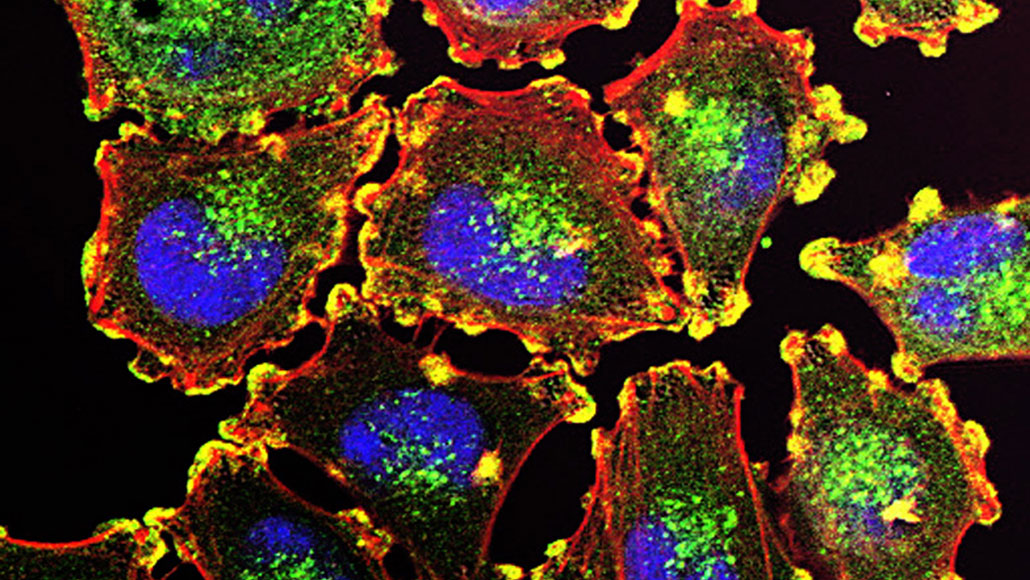50 years ago, cancer vaccines were a dream
Now, researchers are enlisting the immune system to combat the disease

New strategies to provoke the immune system to attack cancer cells may keep skin cancer (a type of melanoma that spreads through the body is shown) and other tumors in check. Blue indicates cell nuclei, red indicates actin, green an actin regulator, and yellow cellular structures called podosomes.
Julio C. Valencia/NCI Center for Cancer Research








